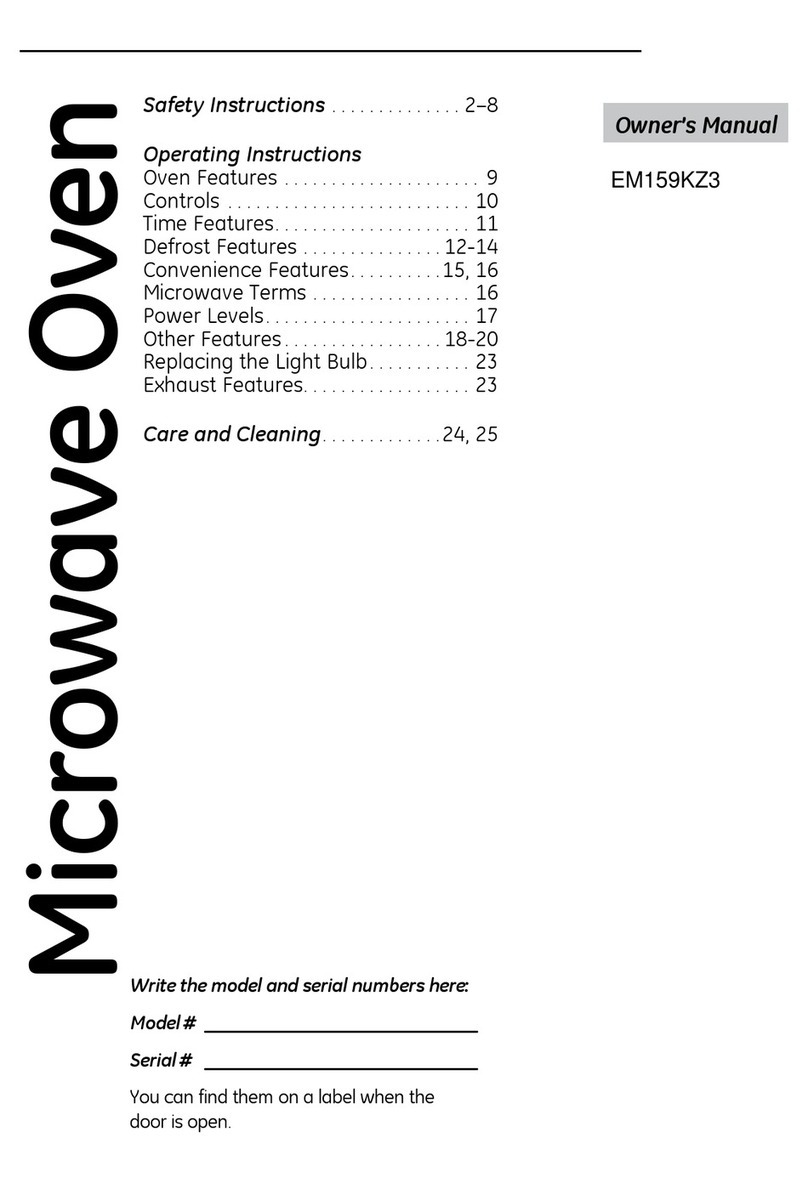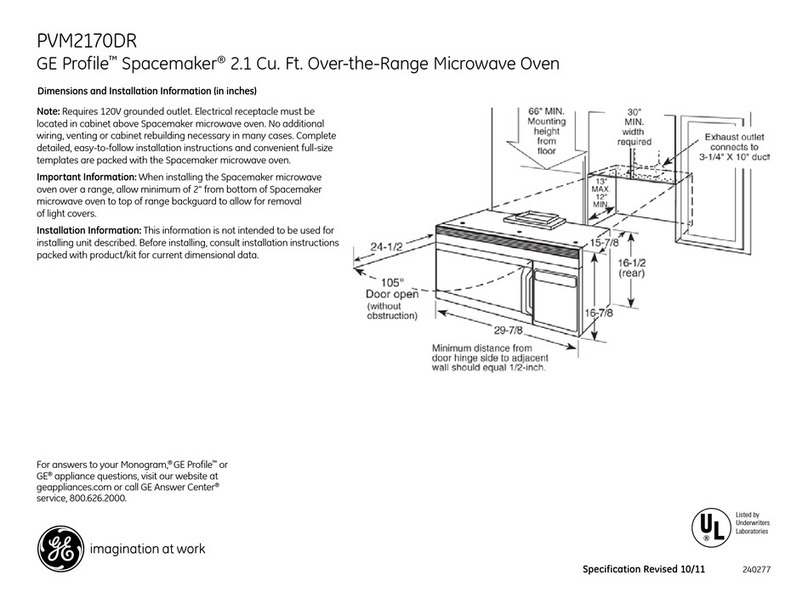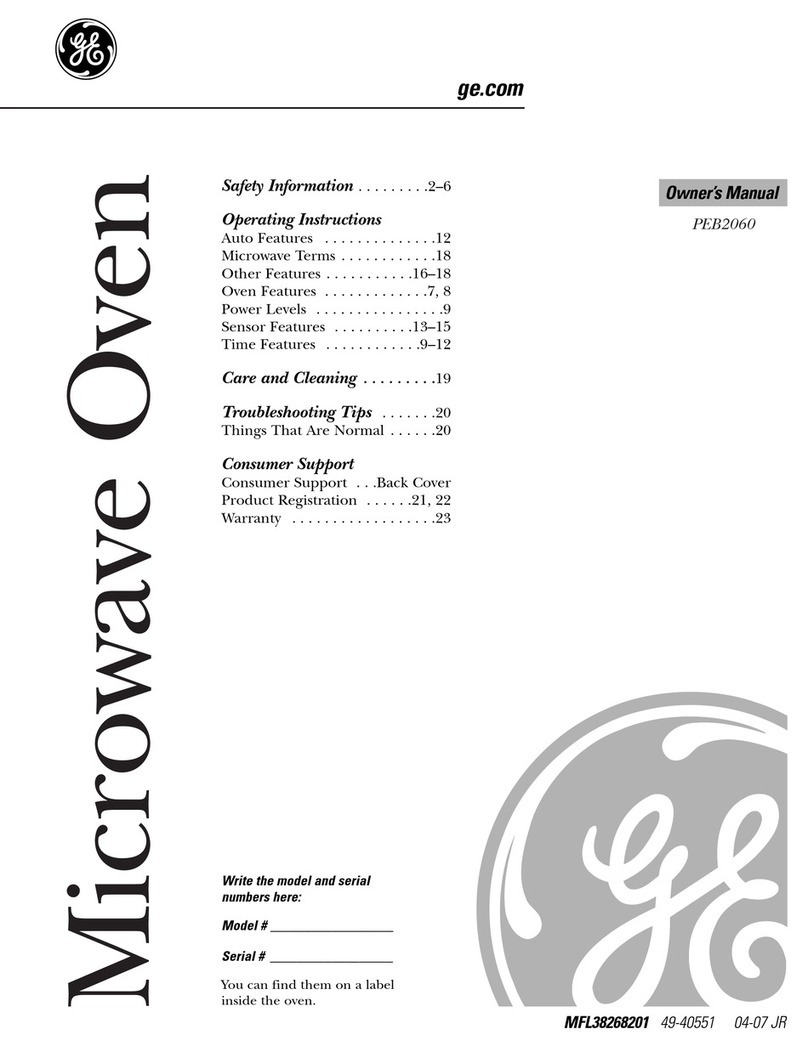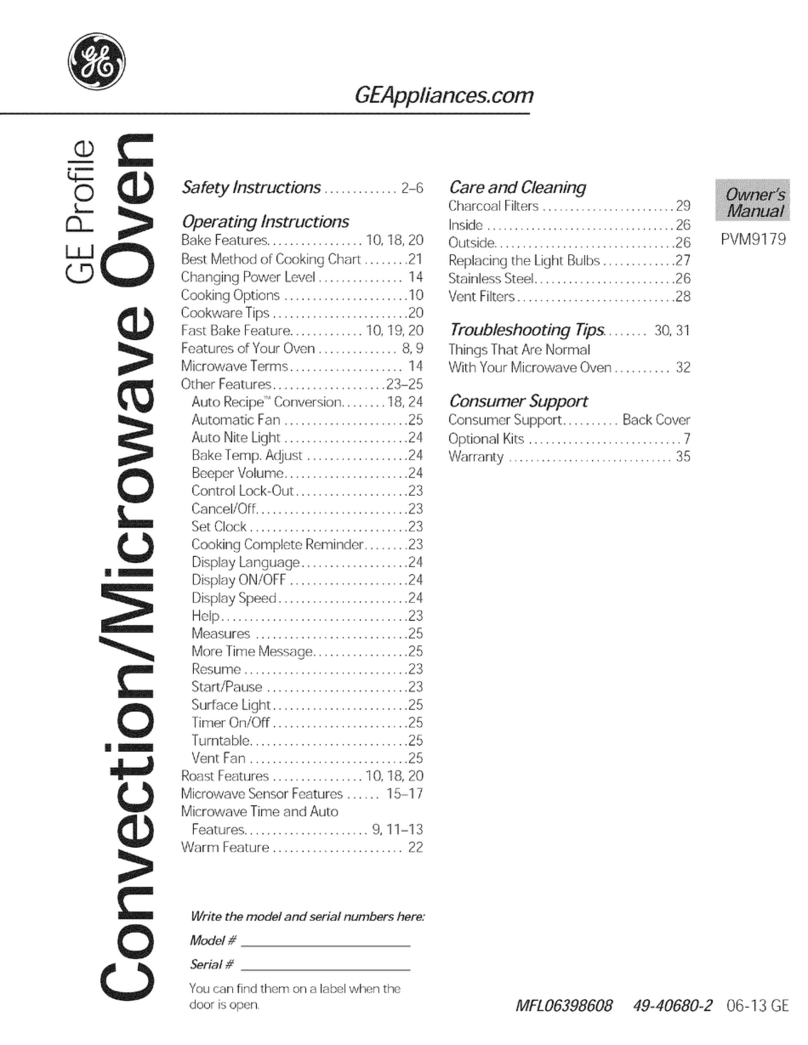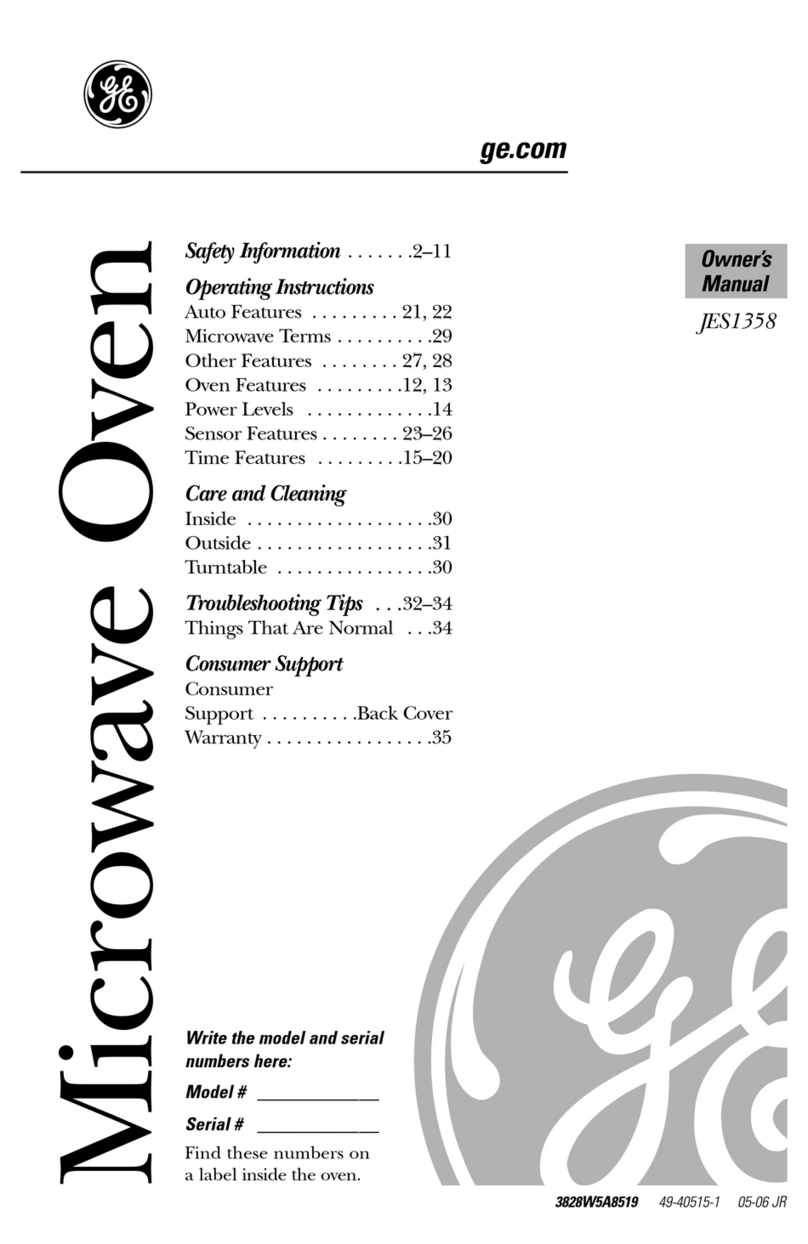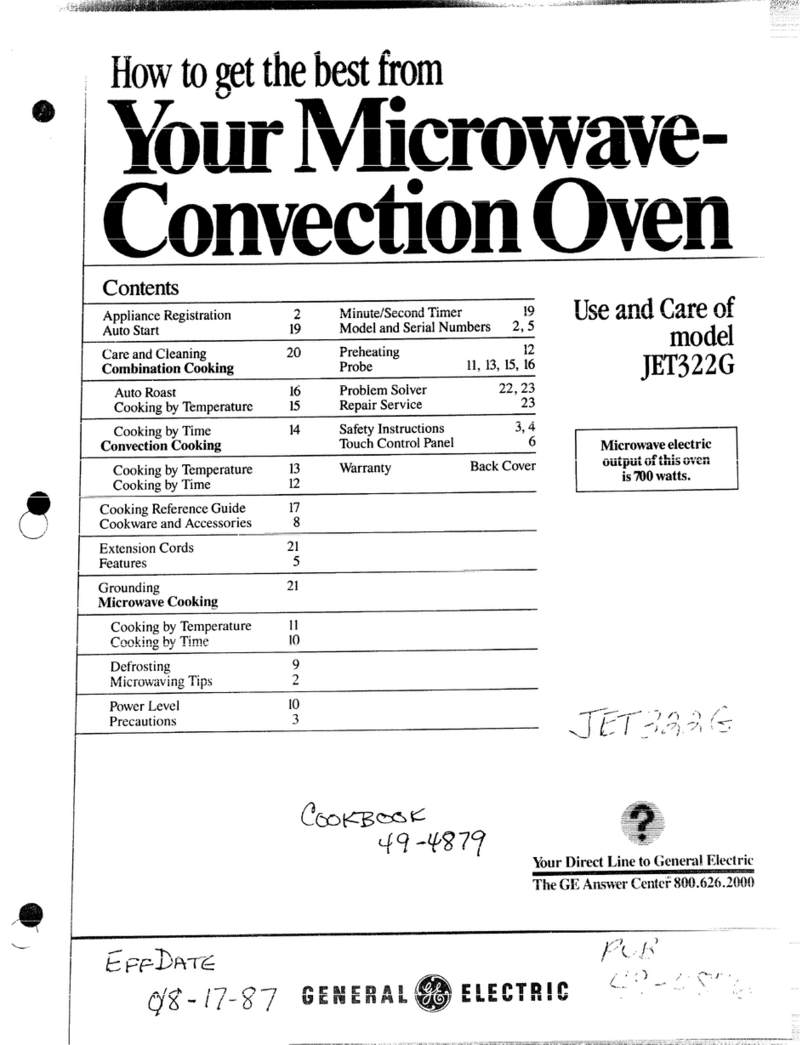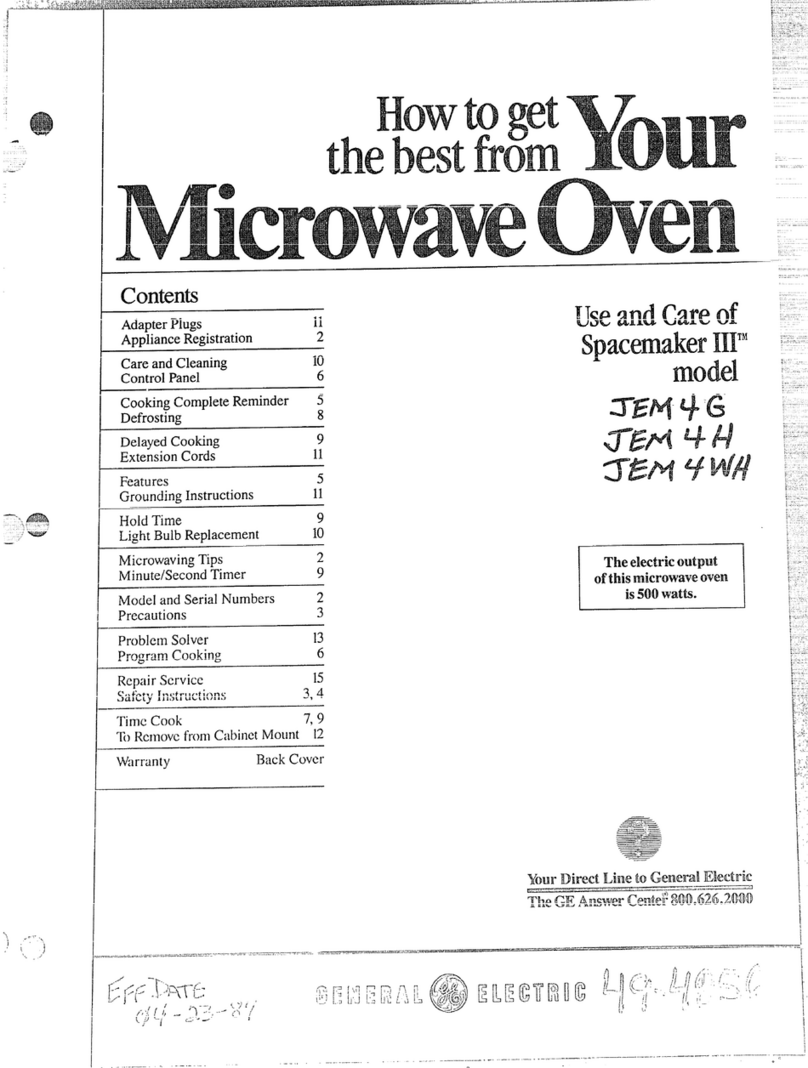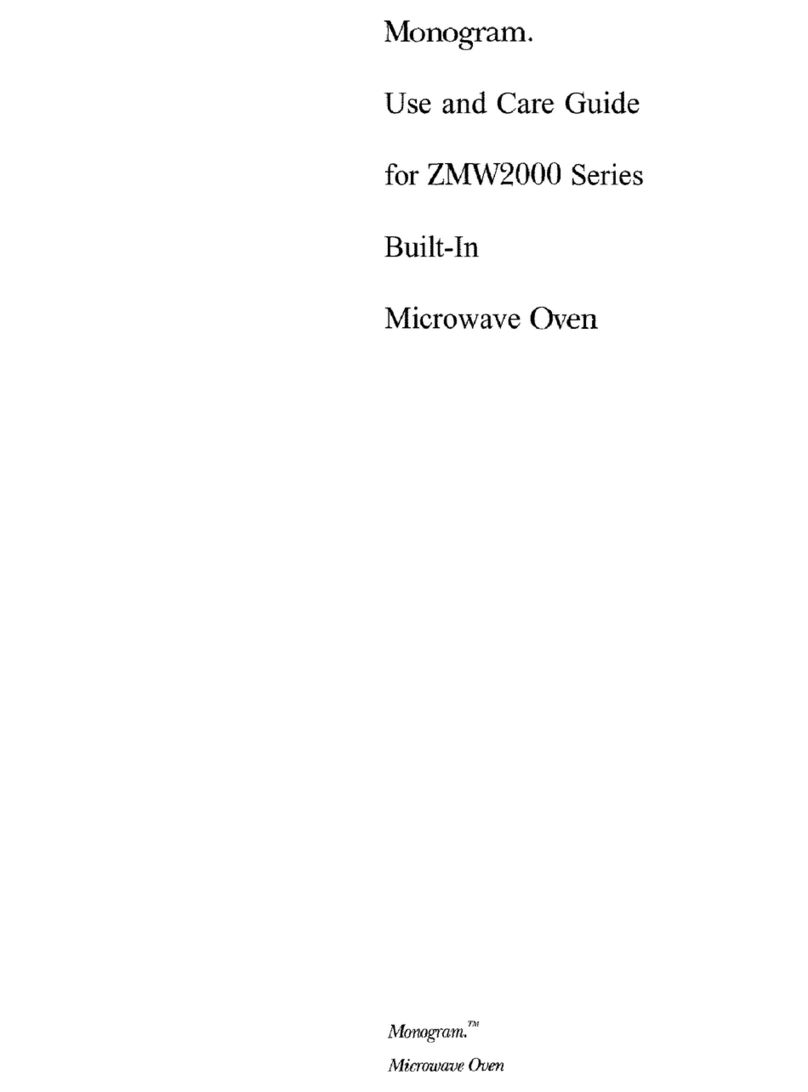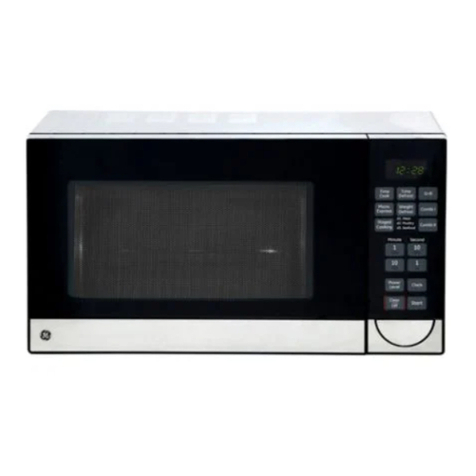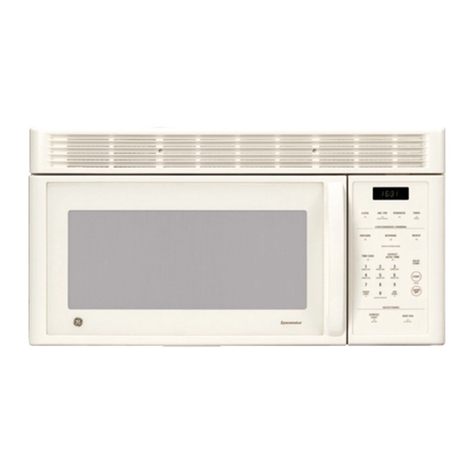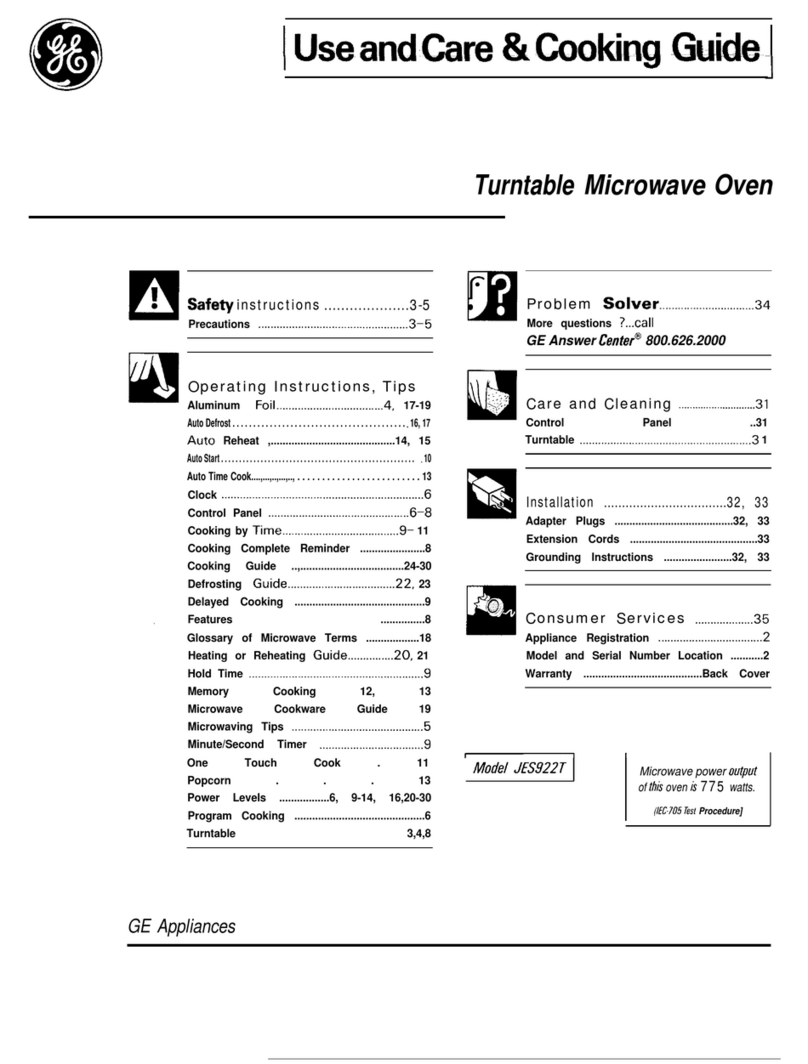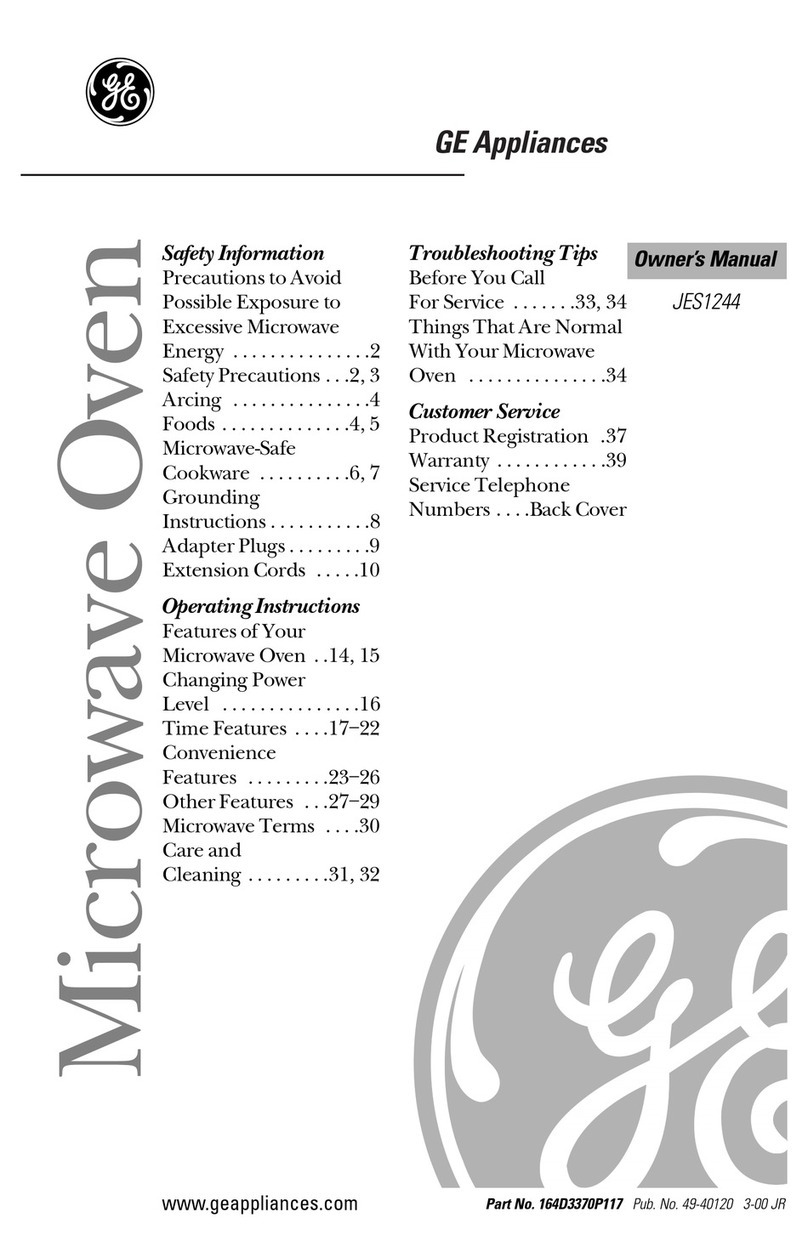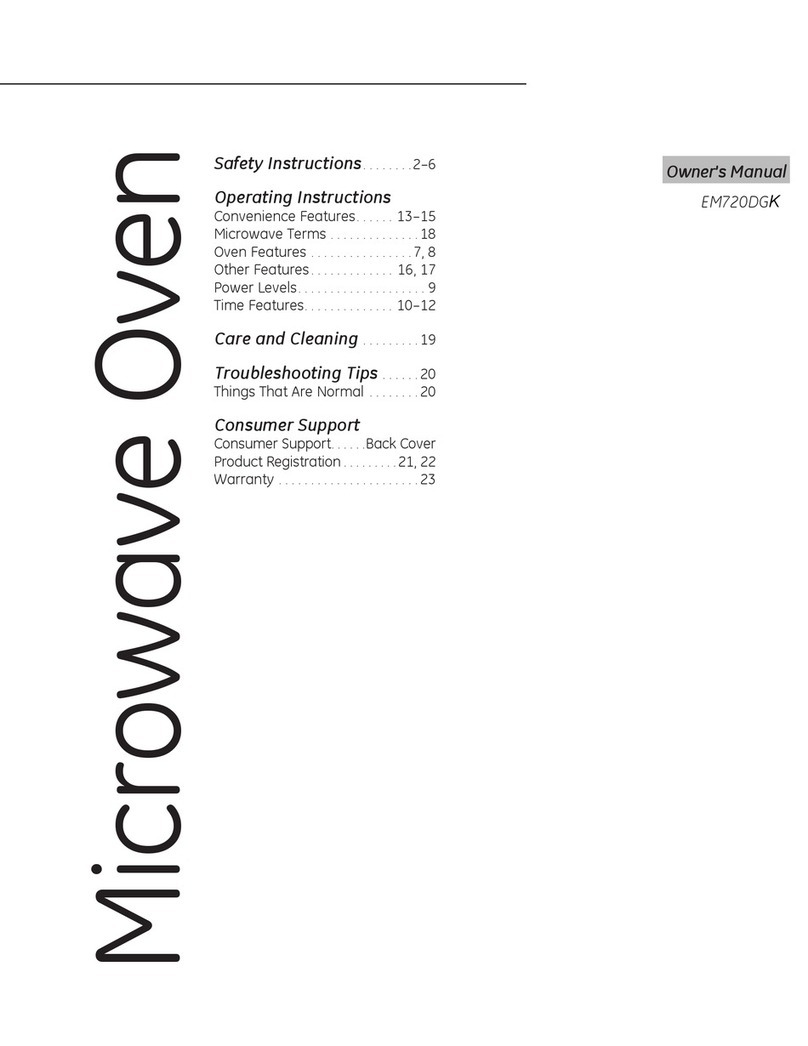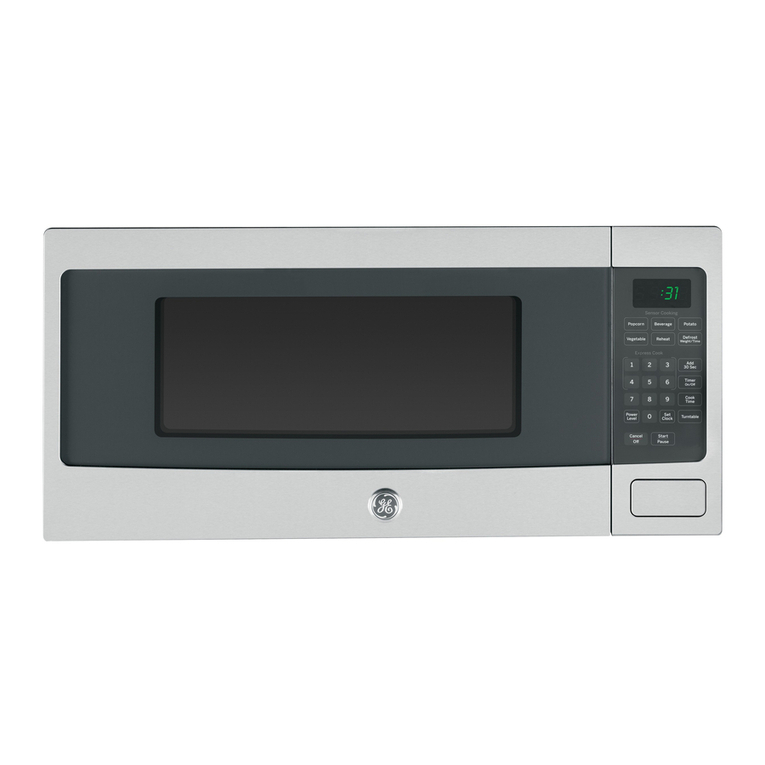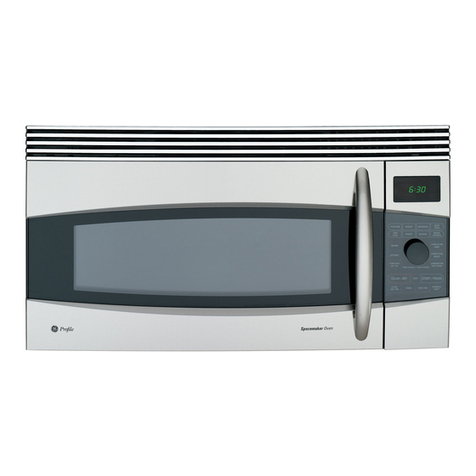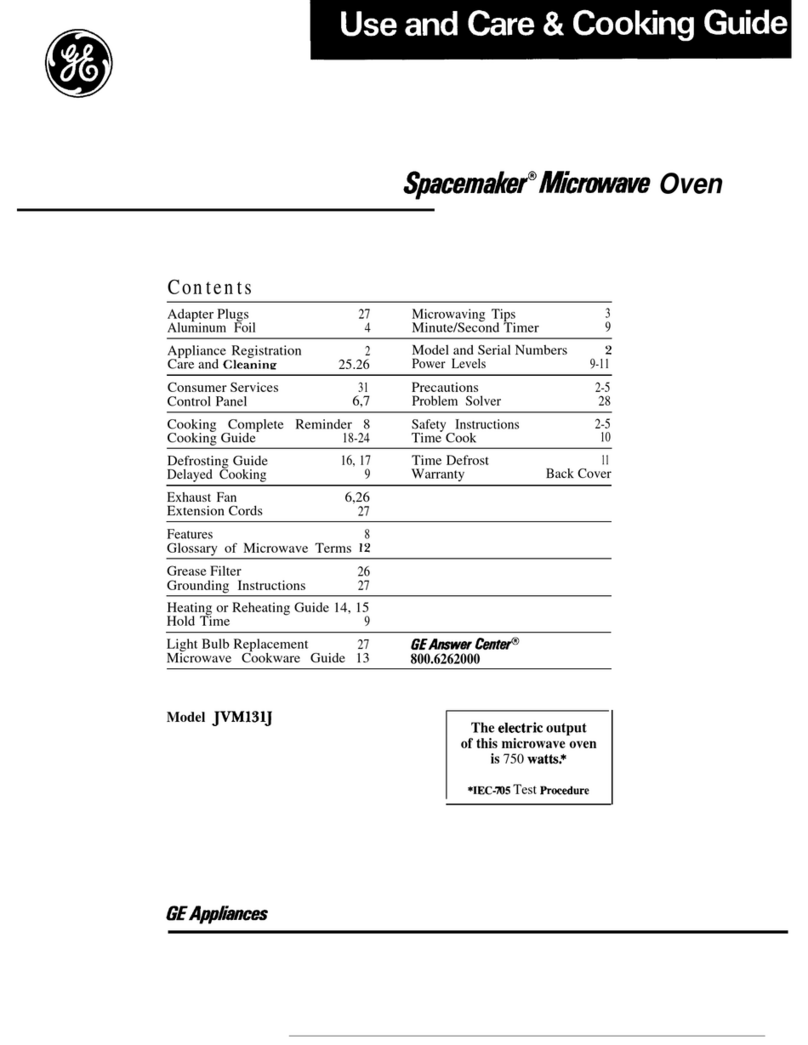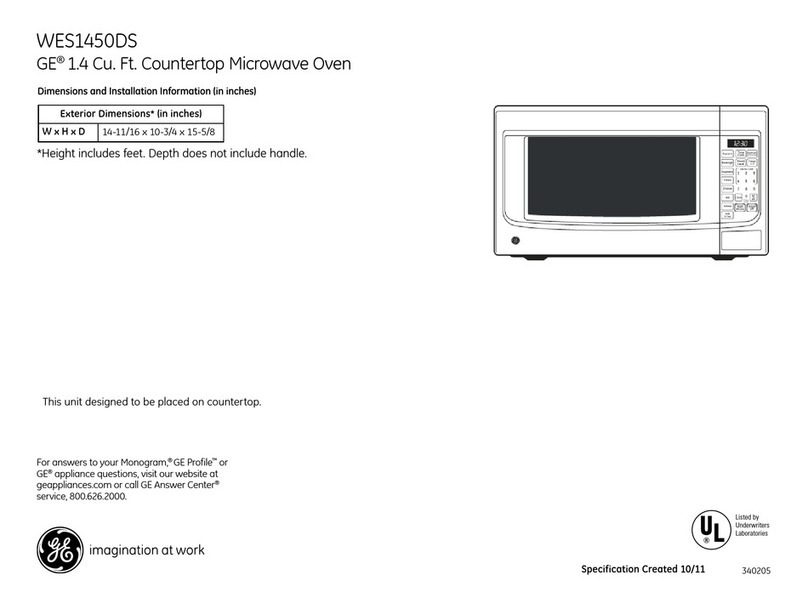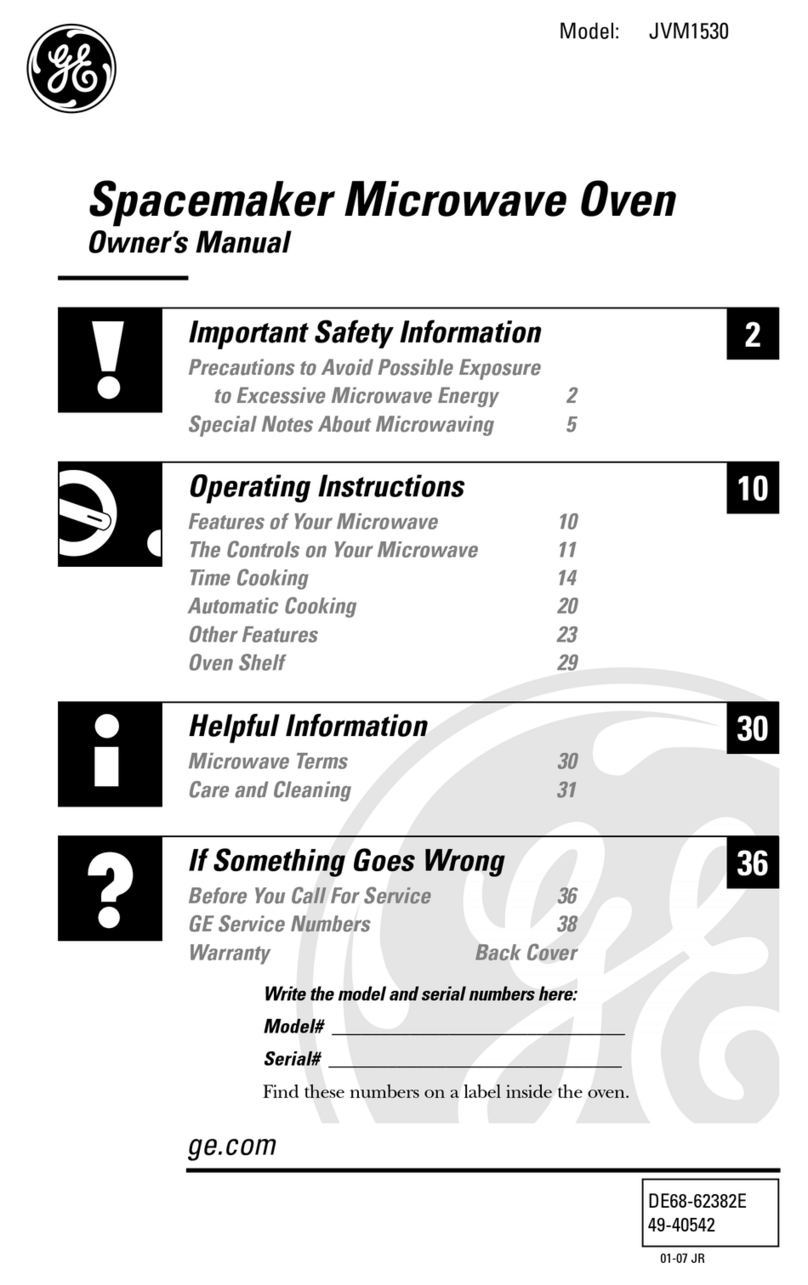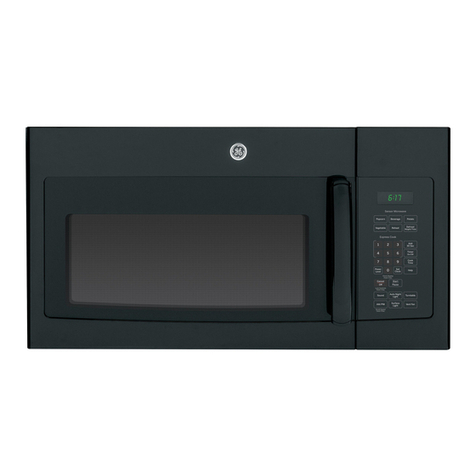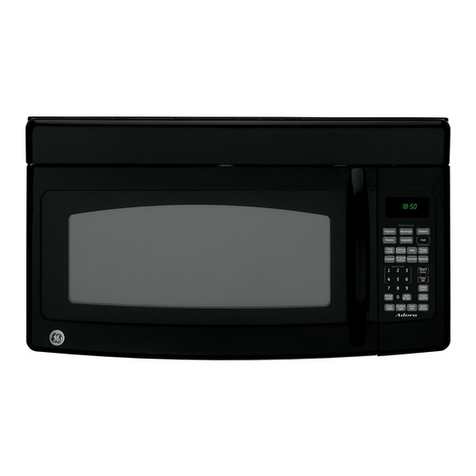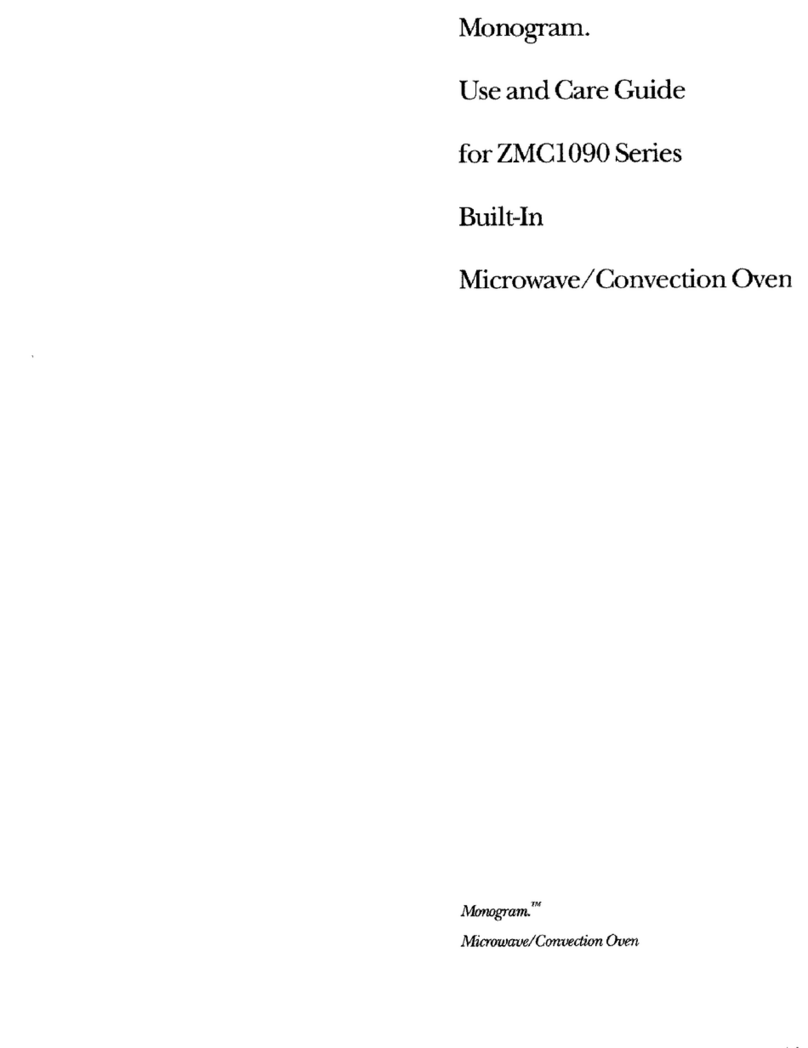
~.k$temi!s may hat kmaww
ofheat transferred fromth? heated food. This
is especially trueifplastic wrap has been
covering the top and handles of the utensl
Pot. !nokiers may be needed to handle the
u@nsiL
:4. the Well SJW can iNxxmM3too
h& to touch. Be careful touching the shelf
during and after cooking.
“Don’t heat’ fowl Ccmtmltws h
,.,.
the oven. Pressure building up can cause the
container to burst, resulting in inj~y.
-4.Khm’t defrost frozen liquids—especially
carbonated ones— in the oven, Even if the
container is opened, pressure can buiki up.
is can caus; the cofitainer to burst, result-
in injury.
:3. Don’t overcook food excessh.m!y. Food
dries out, and can even ignite in some cases.
5, Hf%odshould ever igrlife: Keep the Well
door c%HH.!. Turn Wthe power
turn timer to OFF’ or disccmmxt power cord
or shut ofl power at the fuse circuit breaker
panel.
7. Remove the Wnperature sensor fmrn the
over! when not using it i%cook with. If you
leave the sensor inside the oven without in-
serting it in food or liquid, and turn on microw-
ave energy it can create electrical arcing in
the oven, and damage oven walls.
S. Remove wire twist-ties on paper and, plas-
tic bags before p~,acing in oven, Twist-ties
.smrwtirnescause bag to heat, and may cause
fire. Foods in paper or plastic bags should
only be heated for short periods of time.
()- )z&J~~i~g~gg$(inoroutofshell]is~~~~~~”
fmfrmndedfor microwave cooking. IJressure
can build up inside egg yolk and may cause
it to burst, resulting in injury.
10. Do n~t pop in your
Wen unless in aspecial microwave popcorn
accessory or unless you use popcorn in a
package labeled. for microwave ovens. Be-
cause of the heat generated without these
rxecauiions, the container could catch fire.
11. L&2 If Y?eta!WNyas dii%wtw.!in
Metal strips as used on meat roasts are help-
Min cooking food v&en used as directed.
Metal trays may be used for TV dirmers.
However, when using metal in the microwave
oven, keep mt?tal at !WK5t1-inch away from
sides of oven.
12. ml not operate the Wferl whm.$ to
avoid $kmage to tm? oven and the danger of
fire). If by accident the oven should run empty
aminute or two, no harm is done. However,
try to avoid operating the oven empty at all
times —it saves energy and prolongs life of
the oven.
13. Foods with outer “skin” such
as potatoes, hot dogs or sausages, tomatoes,
apples, chicken livers and other giblets, and
eggs (see above) should be pierced to allow
steam to escape during cooking.
I.A. “~oi!able” cookingpm.mhes and tightly
closed plastic bags or plastic wrap tightly
covering containers should be slit, pricked or
vented as otherwise directed in Cookbook.
If they are not, plastic could burst during or
immediately after cooking resulting in in-
jury. Also, plastic storage containers should
he at least partially uncovered becatise they
form such atight seal.
15. Plastic Utensil$—??lastic utensils de-
signed for microwave cooking am very useful,
but should be used carefully. Even microwave
plastic may not be as tolerant of overcooking
conditions as are glass or ceramic materials
and may soften or char if subjected to short
periods of overcooking. In longer exposures
to overcooking, the food and utensils may
even ignite, for these reasons: 1)Use mi-
crowave plastics only and use them in strict
compliance with the utensil manufacturer%
recommendations. 2) Do not subject empty
utensils to microwaving. 3) Do not permit
children to use plastic utensils without eom-
p!ete supervision.
16. .!30not use your micmmve oven to dry
newspaper. If overheated, it can catch fire.
1. steam or vapor escaping from around the 2. Light reflecting around door or ollter
Cklol-. case.
4
